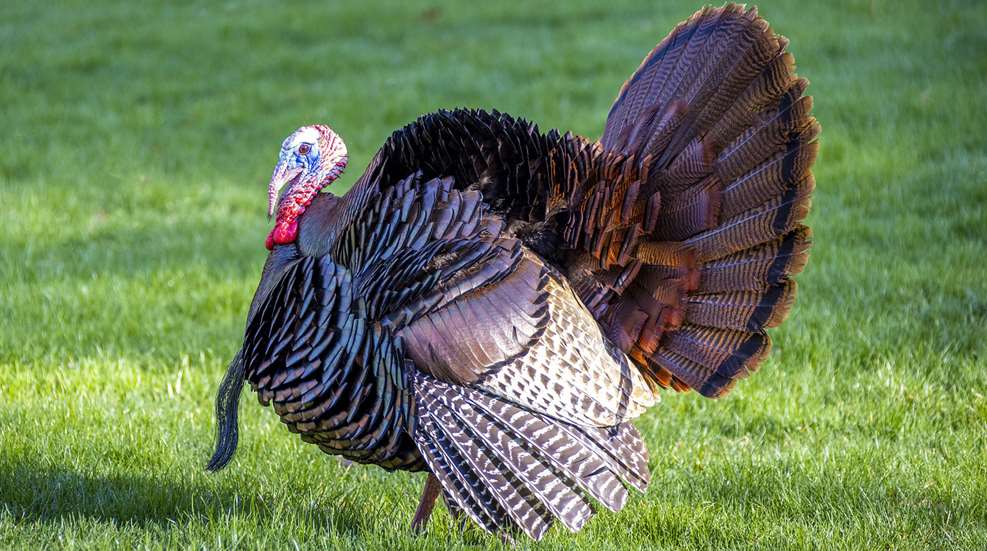
Decoying ducks and geese has been around almost as long as the birds have. Every waterfowler knows the value of a good spread of blocks. But besides waterfowl, other wildlife species are also very susceptible to decoying.
Only recently have we begun to see the true value in using decoys for deer hunting. Predators too, can be coaxed into range with decoys, while doves and crows will also respond favorably to man-made look-alikes.
For me, the most overwhelming decoy reaction I have ever seen has come from wild turkeys in the spring. Since I have been using decoys, my ratio of tags per bird has dropped to just about 1-to-1. I have only not filled one spring turkey permit since 2017, and I believe decoys made the difference.
When we talk about decoying turkeys, several of the same questions seem to come up time and time again. I would like to address those queries today. Before we start, let me clarify something. The advice I give in answering these questions comes from my own personal experience, and thus the only scientific approach I use is the massive amount numbers of hours I’ve spent watching wild turkeys react to decoys.

1) How Many Decoys Should I Use?
The easiest way to answer this question is to look at what the birds do during the spring. Do wild turkeys flock together or do they keep to themselves? These are flock-oriented birds. Except for when the hen is sitting the nest, turkeys are very uneasy if they are not with more of their own kind.
In big timber settings I usually only use two decoys. Most often I will use a hen and a standing jake. In wide-open country, however, I like to show off the flock. I'll use a full-strut jake and surround him with two or three hens, and maybe even a standing jake. If the gobbler sees both male and female turkeys, he has got twice the reason to come in.
2) Is it Safe to Use Male Decoys?

Jake, semi-strut jake and full-strut jake decoys are all available. When and where it is safe to use them is an important issue. In a situation where safety from other hunters is a concern, particularly on public land, flock-up you hen decoys using a couple of “safety” hens and a couple of natural hens. This will entice your gobbler and keep you safe.
On the other hand, if you are on private land, and you have a pretty good idea of who is around, there is no greater turkey attracting tool than a tom. Toms also come in "safety" colors, and I cannot imagine anyone shooting a gobbler with blaze orange wingtips.
Anytime you use decoys, be aware of where you set-up in relation to them. If you don't create a potentially dangerous situation, then using decoys will be safe.
3) Should My Decoys Move?
There is no doubt that adding movement to any decoy will make it appear more lifelike. Life is movement; therefore, your decoys should move to be more effective. Adding movement to an otherwise rigid, stationary decoy can sometimes be counter-productive, however. Strings and threads attached to decoys to make them move will likely backfire on you, and spook your gobbler.
My best suggestion is simply to use lightweight decoys. The ultra-lightweight decoys are designed to move with even the slightest breeze. And trust me, the circles that a tom decoy makes on his peg are as natural a gobbler movement as there is.
4) Can Turkeys get Decoy Shy?

Absolutely. That is why I never recommend that you play pre-season decoy games with toms you intend to hunt. These birds survive by instinct. They react quickly to negative stimuli. Do not tip your hand by showing him your best moves ahead of time.
If in hunting situations you feel that the gobbler has become too accustomed to your set-up, then change it. If he sees your strutting jake and several hens and then leaves the field, crawl out and grab the tom and a hen and put them away. Then when he comes back out to survey the pasture, he will see the other tom has gone off to service a hen, leaving the rest of the flock undefended. This just might the break he has been waiting for and he will come on in.
Be creative with your decoys. Move them around, and do not use the same combination or same set-up time after time. This year, I plan on trying something different.





































